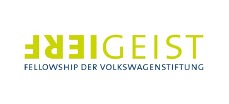We are investigating the dynamics of signalling molecules and metabolites in diatom-bacteria interactions across the day-night cycle.
Research
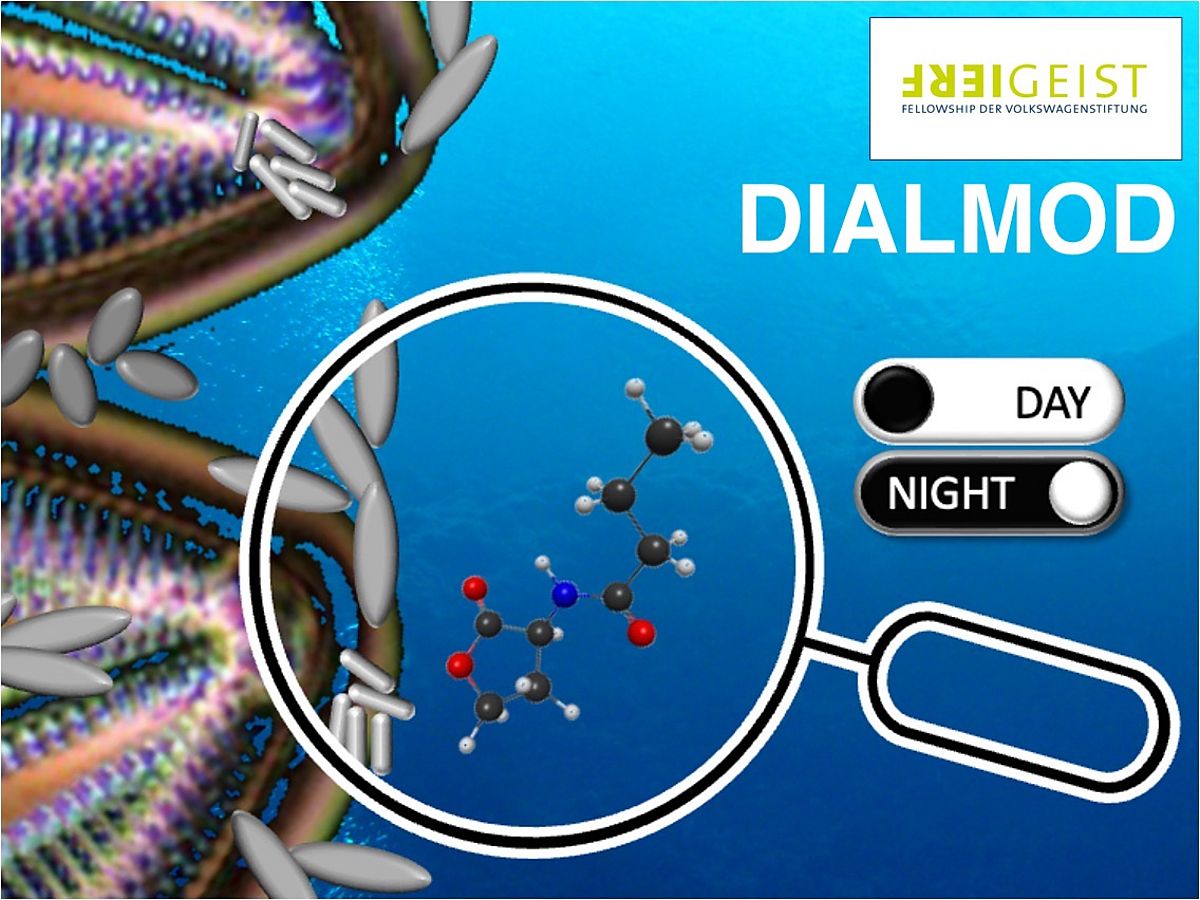
DIALMOD project concept
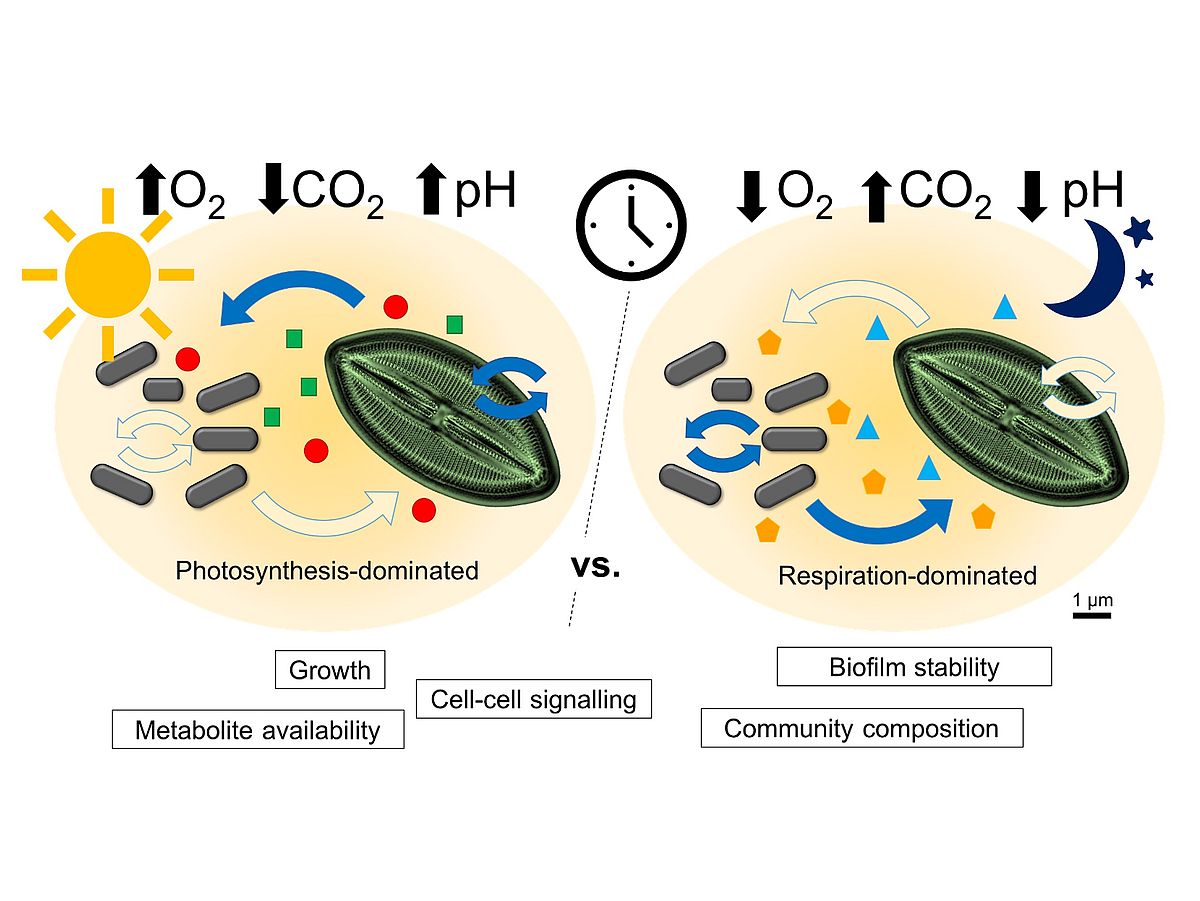
Chemical clock-work?
The main hypothesis of DIALMOD is that the shifts in abiotic conditions (pH, oxygen) due to differences in photosynthesis during day and night affect the activity and processes of diatoms and bacteria and thereby act like a clock for the community.
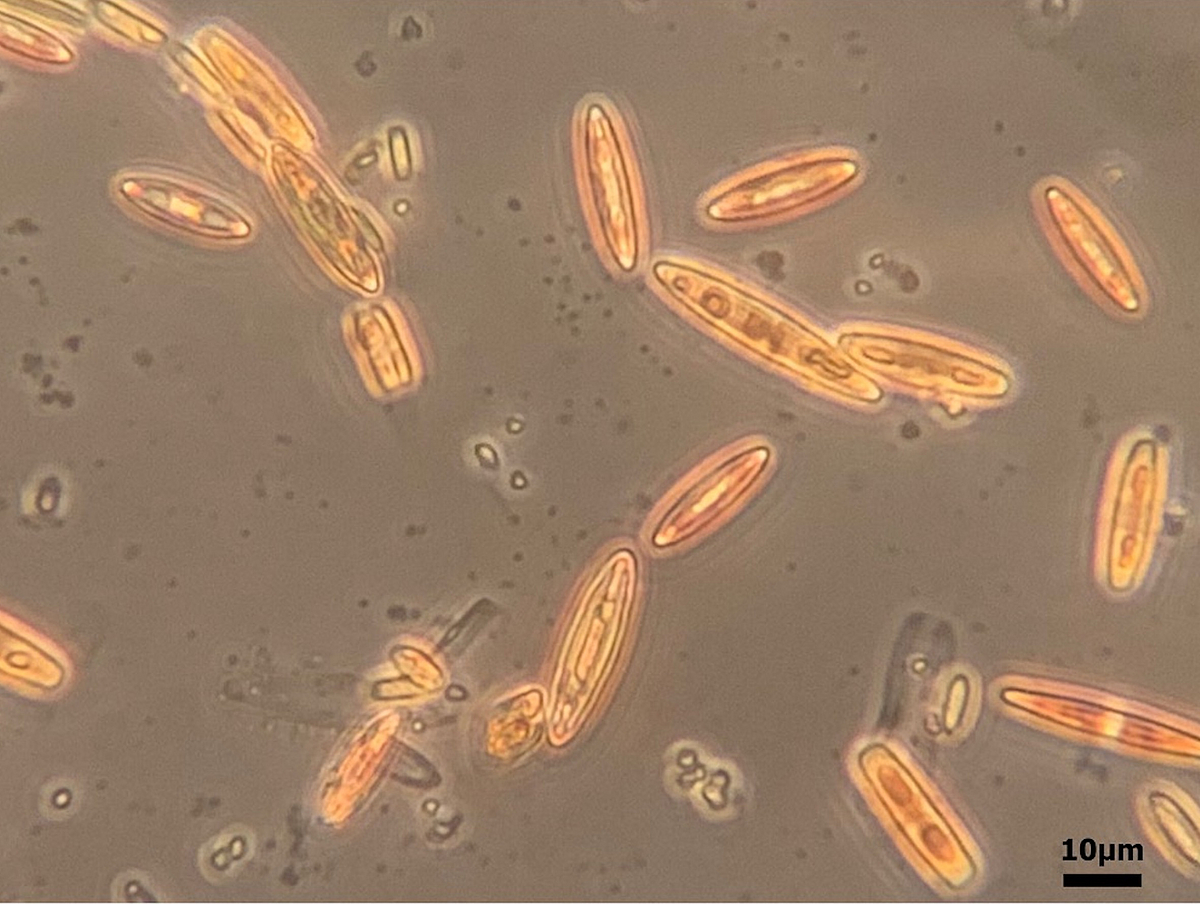
Our study objects: benthic diatoms
Natural benthic diatom sample from Helgoland under the microscope (400-fold magnification).
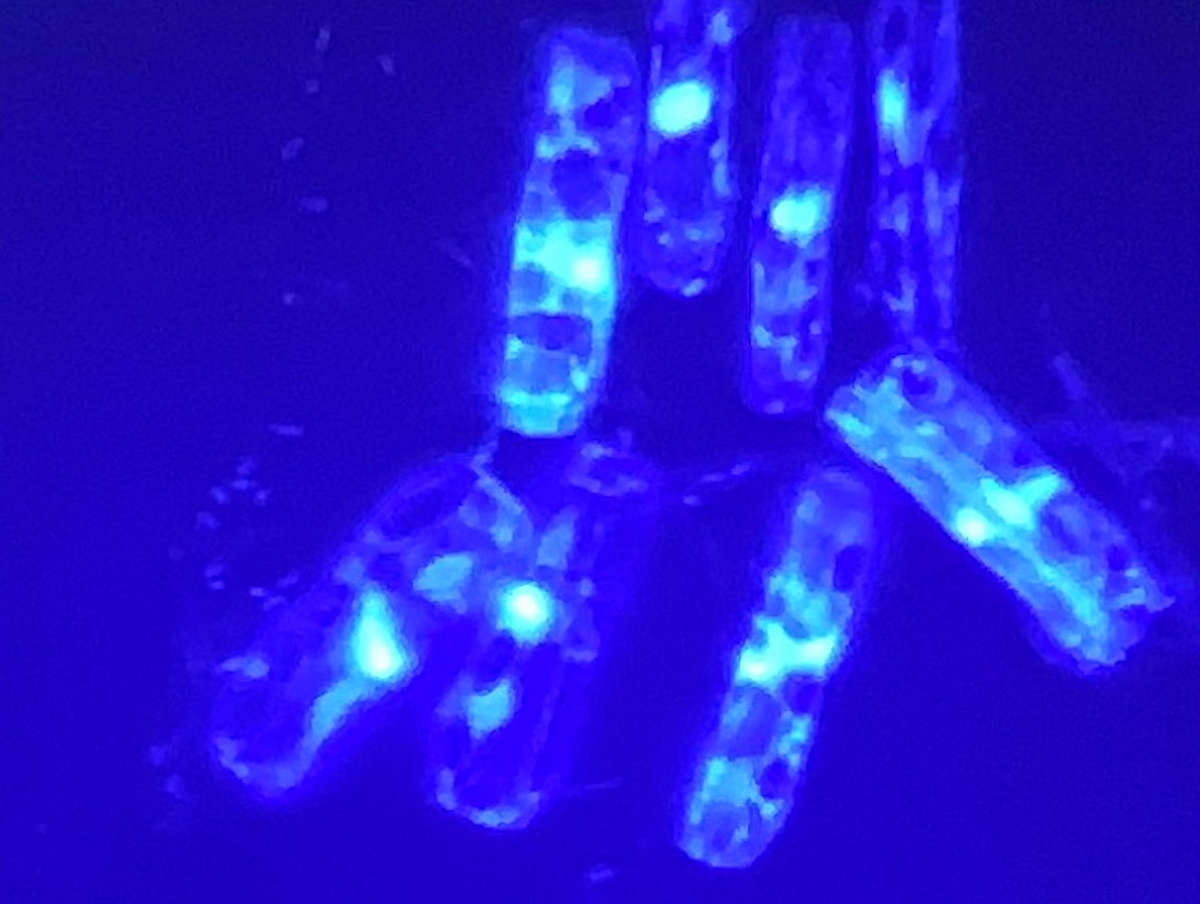
Close neighborhoods: biofilms
Biofilm of benthic diatoms and bacteria stained with DAPI and visualized under a fluorescence microscope (600-fold magnification).
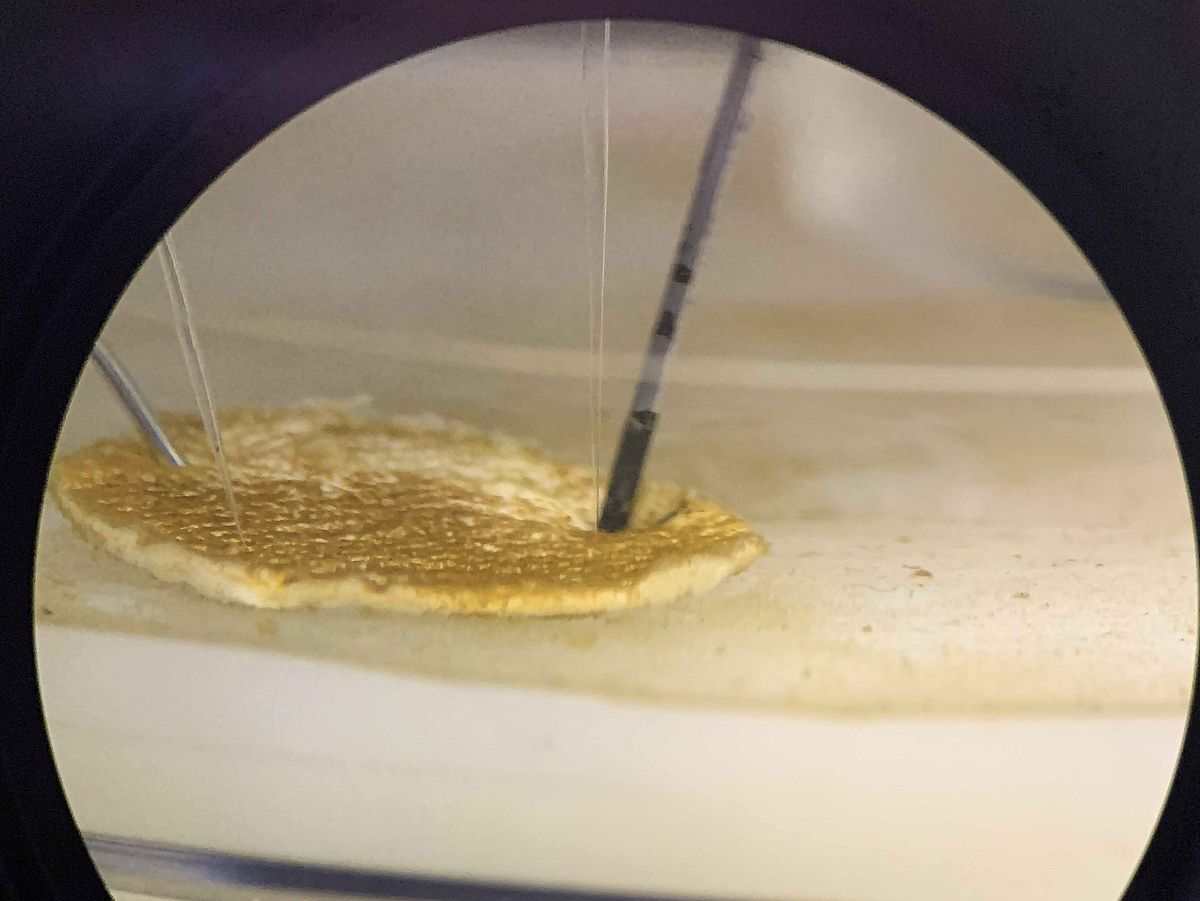
Glimpse into the small world
Diatom-bacteria biofilm on a membrane fixed with needles while pH and oxygen measurements are performed with thin glass microelectrodes (30-fold magnification).
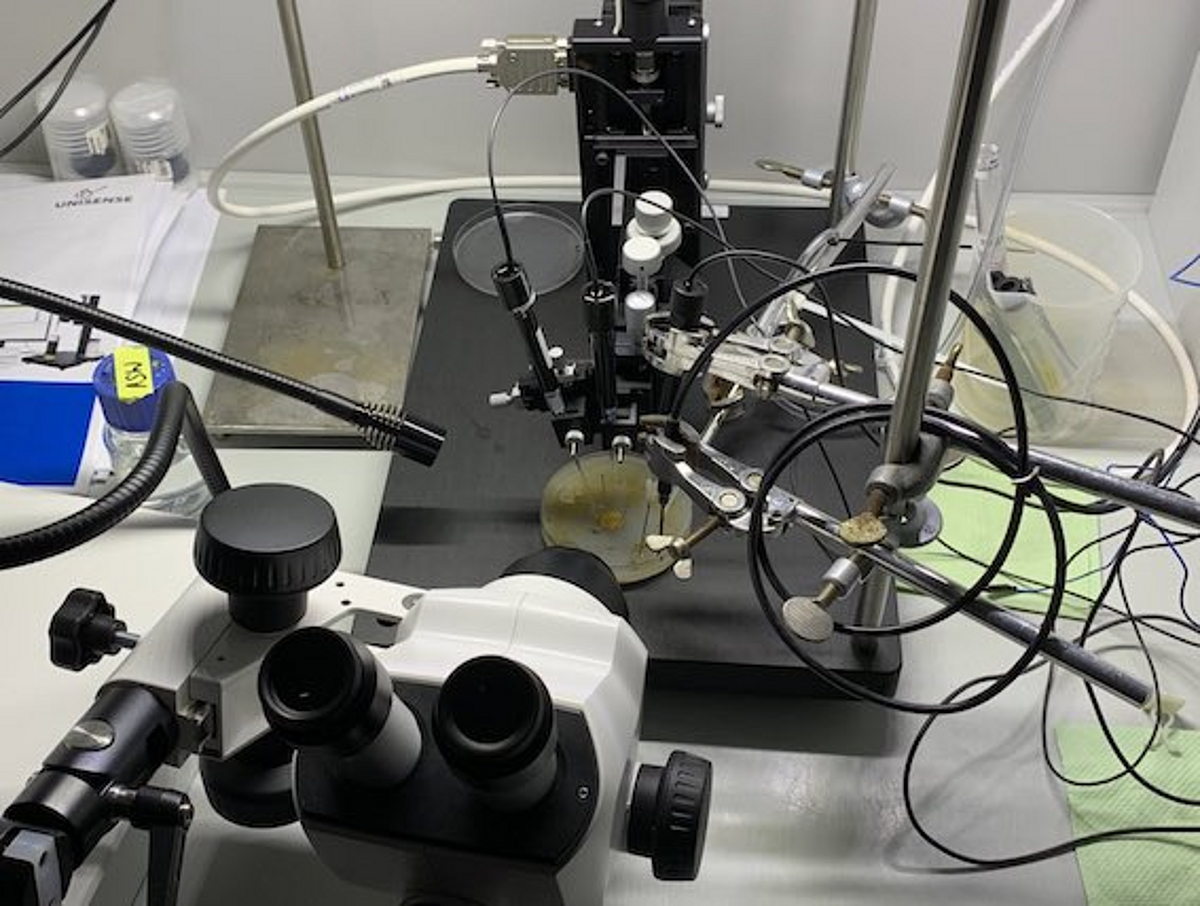
Measuring at micro-sale
Measurement setup with microsensors to obtain vertical profiles and diel curves of pH and oxygen from the diatom-bacteria biofilms.
Unravelling the communication dynamics in marine communities
Communities of photosynthesising and nutrient-cycling microorganisms are fundamental to life on Earth. They rely on chemical crosstalk via a range of specific molecules to mediate their interactions, “communicate” and function efficiently. Microalgae-bacteria communities in aquatic systems share micro-habitats where abiotic conditions fluctuate substantially on a diurnal time scale, because the interplay of photosynthesis and respiration causes steep gradients of pH and oxygen. Such abiotic conditions have the potential to impair communication by altering the molecules and thereby disrupting the associated interactions, as shown in recent studies by the team for macro-organisms.
The DIALMOD project investigates the temporal and spatial dynamics of chemical communication in marine diatom-bacteria biofilms. Combining biological, chemical analytical, and computational methods for high-resolution analysis, it aims to unravel if there is a chemical clock inducing or preventing interactions in marine communities.
Funding
We thank the Volkswagen Foundation for financial support.
